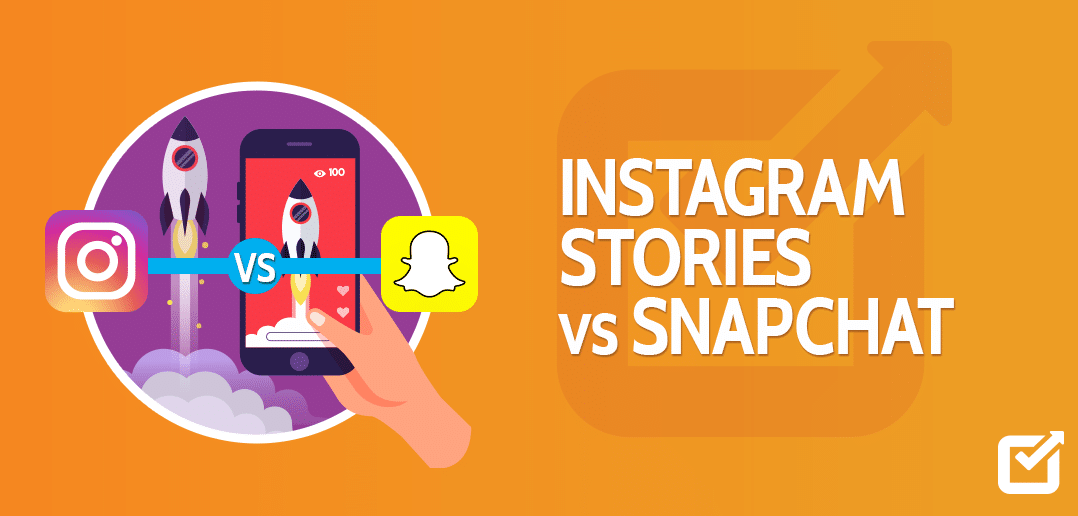Did you know that 72% of businesses say social media marketing is important to their success, yet only 53% feel confident in their social media strategy?
Creating a social media strategy is fun, but presenting it to clients successfully is a whole other challenge.
If you’re a social media manager drowning in generic templates of social media proposals and frustrated with client rejections, this blog is for you.
We’ll show you how to ditch the one-size-fits-all approach and create a proposal that speaks directly to your client’s pain points.
Get a free social media proposal template to help you land deals and maximize your social media scheduler.
It’s time to turn those proposals into paying clients.
Let’s get started!
Here’s How You Can Impress Your Clients!
Impress clients with Social Champ! Craft stunning content, publish at peak times, and wow them with in-depth, custom analytics reports.
Short Summary
- A social media proposal is a document used by marketers or freelancers to convince clients to hire them.
- It explains what the marketer will do to achieve the client’s social media goals, such as increasing brand awareness or website traffic.
- The proposal also includes details about the target audience, content strategy, and how success will be measured.
- Social media proposals help secure projects by showcasing your expertise and the value you bring to a client’s social media presence.
- They establish clarity by outlining a roadmap for managing the client’s social media channels, ensuring everyone is on the same page.
- Proposals define success metrics, allowing you to demonstrate the tangible impact of your social media efforts on the client’s business.
- You can create a proposal for client acquisition, project kickoff, event promotions, partnership opportunities, or when implementing a new strategy.
What Is a Social Media Proposal?
A social media proposal is a persuasive document crafted by marketers or freelancers to secure clients.
Think of it like a roadmap. It details the client’s goals, like boosting brand awareness or increasing social media traffic.
Then, it proposes a strategy to achieve those goals. This includes:
- Target Audience: Who are you trying to reach on social media?
- Platforms: Which platforms (Facebook, Instagram, TikTok, and LinkedIn, among others) are best for reaching them?
- Content Strategy: What kind of content (posts, videos, stories) will resonate?
- Engagement Tactics: How will you initiate conversations and build a community?
The proposal also lays out a timeline for implementation and defines how success will be measured.
With this clear vision, the marketer and the client are on the same page.
Featured Article: Social Media Intelligence: What Is It & Why You Need It
Why You Need a Social Media Proposal
There are several compelling reasons why a social media proposal is a crucial tool in your marketing arsenal.
Let’s explore!
You Can Win Clients and Secure Projects
A well-crafted proposal serves as a persuasive document.
It outlines your expertise and showcases the value you can bring to a potential client’s social media presence.
It convinces them that your strategic approach will achieve their specific goals.
You Can Establish Clarity and Alignment
The proposal acts as a blueprint, detailing a clear and comprehensive strategy for managing the client’s social media channels.
This shared roadmap ensures everyone is on the same page regarding goals, target audience, content approach, and overall vision.
You Can Define Success Metrics and Measurement
The proposal goes beyond outlining strategies.
It should define the key performance indicators (KPIs) that will be used to track progress and measure the success of your social media efforts.
This allows you to demonstrate your tangible impact on the client’s business.
You Can Set Expectations and Communication Channels
A well-structured proposal fosters transparency by clearly outlining your deliverables, such as reports and analytics.
It also establishes communication channels, ensuring a smooth workflow and a strong client relationship throughout the project.
Featured Article: 20 Recent and Popular Social Media Memes 2024
How to Create a Social Media Proposal
Building a strong social media presence for clients requires a well-defined plan.
Let’s examine how you can create a social media proposal that outlines your strategy and secures the deal.
- Understand the Client’s Needs: Thoroughly understand the client’s objectives, audience, social media presence, competitors, industry trends, and budget constraints.
This information forms the foundation of your proposal.
- Define Objectives and Goals: Based on the client’s needs, clearly define the objectives and goals of the social media strategy.
These could include increasing brand awareness, driving website traffic, generating leads, boosting engagement, or improving customer satisfaction.
- Conduct Audience Analysis: Analyze the target audience’s demographics, interests, behaviors, pain points, and preferred social media platforms.
This information helps tailor your content and messaging to resonate with the audience effectively.
- Craft a Content Strategy: Develop a content strategy detailing the types of content like blog posts, videos, infographics, and user-generated content.
You must also highlight the frequency of posting, the tone and voice of communication, and the themes or campaigns to be executed.
- Select Social Media Platforms: Based on audience analysis and content strategy, select the most relevant social media platforms to engage the target audience.
Consider platform demographics, features, engagement levels, and industry best practices.
- Outline Tactics and Campaigns: Detail the tactics and campaigns that will be implemented to achieve the defined objectives.
Options for social media strategies include organic posting, paid ads, influencer partnerships, contests, and community management.
- Allocate Resources: Specify the resources required to execute the social media strategy.
This includes an ad budget, tools for content creation, human resources for management, and implementation timelines.
- Include a Measurement and Reporting Plan: Describe how performance will be monitored, measured, and reported regularly.
Use analytics tools to track KPIs, review performance regularly, optimize strategies, and prepare detailed reports for stakeholders.
- Add a Crisis Management Plan: Anticipate social media risks like negative comments, PR issues, or algorithm changes to manage potential crises effectively.
You must also include a crisis management plan that outlines protocols for handling such situations effectively and maintaining brand reputation.
Pro Tip: Use Social Champ’s social listening tool to track your brand’s mentions! This way, you can always stay on top of a potential crisis!

A snapshot of Social Champ’s social listening tool - Design the Proposal: Present the proposal in a professional and visually appealing format.
Use branding elements, charts, graphs, case studies, and visuals to enhance readability and convey key points effectively.
- Review and Finalize: Review the proposal thoroughly to ensure accuracy, clarity, and alignment with the client’s needs and expectations.
Based on feedback, make any necessary revisions or additions before finalizing the proposal for presentation or submission.
Follow these steps to craft a social media proposal showcasing your strategic roadmap, expertise, creativity, and professionalism for business growth.
Featured Article: 7 Best Social Media Search Engines for Marketers in 2024
When Do You Need a Social Media Proposal?
A social media proposal is crucial when you aim to collaborate with clients on developing and executing a strategic social media plan.
It outlines your expertise and how to utilize social media to achieve your goals.
- Client Acquisition: A proposal is crucial if you’re an agency or freelancer looking to onboard a new client for social media services.
It outlines your approach, strategies, and expected outcomes, showing clients the value you bring to their social media.
- Project Kickoff: A proposal aligns collaboration for new social media projects, whether for clients or within an organization.
It ensures that all stakeholders are on the same page regarding goals, strategies, timelines, budgets, and resource allocations.
- Strategy Refinement: Existing social media initiatives may require a proposal to refine strategies, launch new campaigns, or expand into new platforms.
The proposal helps evaluate past performance, identify areas for improvement, and outline actionable plans for enhancing social media effectiveness.
- Budget Approval: For budget approvals, a proposal details planned activities, costs, ROI, and KPIs for social media initiatives.
It facilitates informed decision-making and justifies investment in social media marketing.
- Partnership Opportunities: Collaborating with influencers, content creators, or other businesses on social media initiatives often requires a proposal.
It outlines partnership terms, expectations, deliverables, and mutual benefits, fostering successful collaborations.
- Event Promotions: A proposal outlines strategies to maximize visibility, engagement, and attendance for events like launches, webinars, and promotions via social media.
Social Media Proposal Template
Want to close a deal? This proposal template gets you started with a strategy that drives results.
Note: This is a template; you can customize it based on your specific needs and the client’s requirements.
Company Name
Date
Client Name
Client Contact Information
Executive Summary
- Briefly introduce yourself or your company and your social media expertise.
- Highlight the client’s business and their current social media presence (if any).
- Summarize your proposed social media strategy and its potential benefits.
Client Background
- Demonstrate your understanding of the client’s business, target audience, and industry.
- Add screenshots of the competition’s strategy, as well as charts, graphs, and other relevant data.
- Briefly discuss their current marketing goals and how social media can contribute.
Social Media Goals & Objectives
- Define the specific goals you aim to achieve with the social media strategy (For instance, brand awareness, lead generation, and customer engagement).
- Set clear, measurable objectives for each goal (For instance, increase website traffic by 20%, grow follower base by 10% per month).
Social Media Strategy
- Outline your social media strategy.
- Target Audience: Describe the ideal customer you want to reach on social media.
- Content Calendar: Outline the types of content you will create and share (for instance, reels, photos, infographics, or videos).
- Social Media Platforms: To justify your choices effectively, recommend platforms (e.g., Facebook, Instagram, Twitter) based on the target audience.
- Posting Schedule & Engagement: Explain how often you will post and how you will interact with followers (e.g., comments, direct messages).
- Paid Advertising (Optional): If you propose using paid advertising, outline the strategy and potential budget.
Measurement & Analytics
- Explain how you will track the success of the social media strategy using relevant metrics (e.g., website clicks, follower growth, engagement rate).
- Describe how you will report these results to the client on a regular basis.
Timeline & Deliverables
- Present a clear timeline for the project, outlining key milestones and deliverables.
Team & Qualifications
- Briefly introduce the team members working on the project and their relevant experience.
Budget
- Outline your fees for social media management services.
- If applicable, include separate costs for paid advertising.
Next Steps
- Briefly outline the next steps for the client if they approve the proposal.
Appendix
- Include any additional information that supports your proposal, such as case studies, social media content samples, or competitor analysis.
Conclusion
Creating a social media proposal is a strategic process that requires a thorough understanding of the target audience and the client’s objective.
A well-crafted proposal outlines actionable strategies and demonstrates professionalism, expertise, and commitment to delivering results.
Businesses and professionals can effectively communicate strategies, create proposals, secure approvals, align stakeholders, and drive successful campaigns using structured approaches and tools like provided templates.











